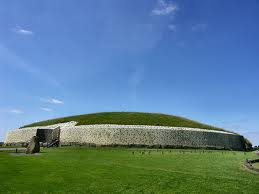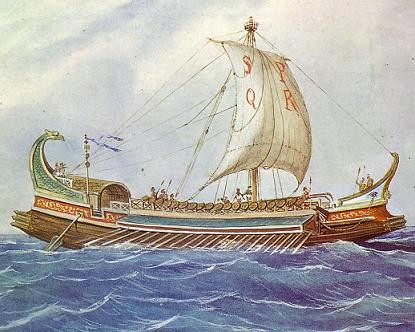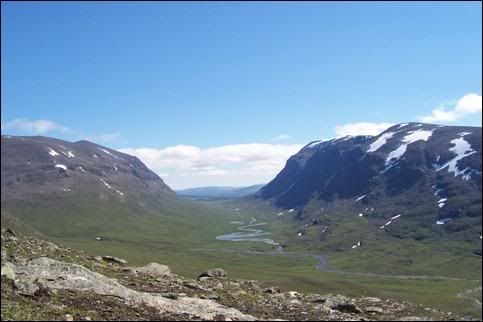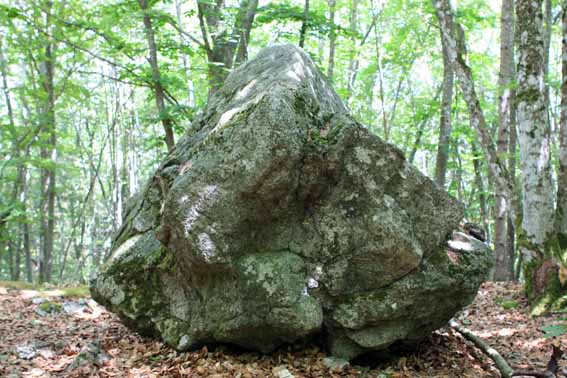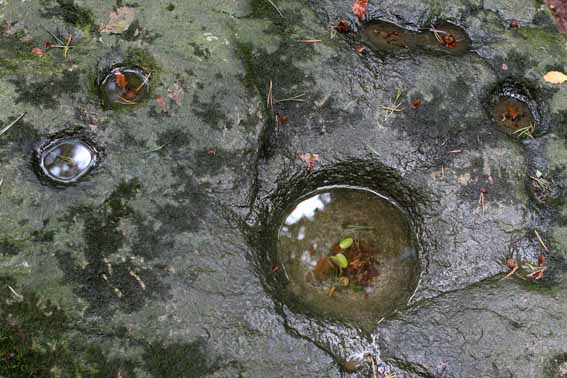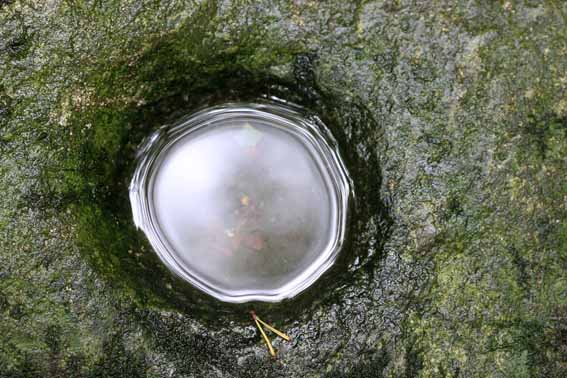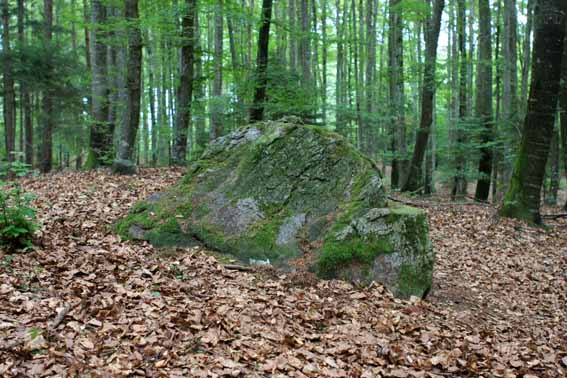Linguiste, M. G. Devoto s’est très tôt intéressé aux réalités historiques, psychologiques, esthétiques qu’expriment et reflètent les faits de langue. En particulier, il n’a pas cessé, depuis ses débuts, de préconiser une collaboration étroite entre grammaire comparée et disciplines historiques. Dès 1931, l’essai Gli antichi Italici montrait l’efficacité de la méthode appliquée à l’Italie pré romaine, et deux éditions n’en ont pas épuisé le succès. Son commentaire des Tables eugubines (1940) est tout nourri d’histoire. Depuis lors, il n’est pas d’année qui n’ait apporté (notamment dans la revue Studi etruschi) le témoignage de la réflexion à laquelle M. Devoto soumettait les résultats conjoints de la linguistique, de l’archéologie, des sciences du droit et des institutions. Dans ces travaux, l’auteur confère à la préhistoire indo-européenne une dynamique, une historicité qu’elle n’avait pas avant lui. Les Scritti minori, recueillis en 1958, sont ainsi comme la préfiguration du grand oeuvre qu’il restait à construire: le livre de doctrine sur les origines indo-européennes.

Giacomo Devoto, Origini indeuropee
Un grand oeuvre dont, après vingt-cinq années de recherches, l’auteur considère sans illusion l’inévitable caractère d’inachèvement: «un chantier», écrit-il ; et d’en «prendre congé», comme ferait l’artiste d’un chef-d’oeuvre ambitieux, si longtemps médité, si longuement accru et travaillé qu’à la fin il dépasse son auteur et ne lui appartient plus. Mais il y a là un excès de mod estie, et l’on devine que le livre de M. Devoto est plus qu’un recueil de données. Il comporte une doctrine, à la fois souple et originale, tout en restant, de propos délibéré, ouvert à la critique et à la révision. Comparé au livre récent de M. P. Bosch-Gimpera, analysé ici même en 1963 (1), il en diffère et par la méthode et par les dimensions.
Fondé presque entièrement sur l’archéologie préhistorique, l’exposé de M. Bosch-Gimpera, quoique fortement personnel, laisse assez loin l’aspect proprement linguistique de la recherche, et seules quelques données très générales y demeurent sous-jacentes; mais le problème crucial, qui est de retrouver le processus historique de la diffusion des dialectes indo-européens, demeure en quelque sorte dilué dans l’extrême foisonnement des faits archéologiques. En somme, M. Bosch-Gimpera n’imposait pas au comparatiste des vues nouvelles. Au contraire, M. Devoto a résolu — et c’est là son grand mérite — d’affronter successivement tous les aspects du problème, d’en réunir et d’en organiser toutes les données, sans jamais négliger l’historique de la recherche. M. Devoto est convaincu, évidemment avec raison, que la diffusion de l’indo-européen ne saurait, dans la plupart des cas, s’être accomplie sans un déplacement notable de groupes de colonisateurs ou de conquérants; qu’en outre, ces groupes d’hommes ne peuvent avoir imposé leur langue à l’exclusion de tous les autres éléments culturels, qu’ils soient de nature intellectuelle (faits sociaux, religieux, psychologiques) ou matérielle (outillage, céramique, armement, usages domestiques et funéraires). Des premiers, l’archéologie ne livre que des traces très indirectes; mais ils ont dû conditionner l’histoire du vocabulaire. Des autres, les témoignages livrés par le lexique sont plus fuyants; mais l’archéologie, là du moins où elle est suffisamment avancée, permet d’en restituer les modalités et les variantes avec une fidélité souvent surprenante. Le problème revient à déterminer dans quelle mesure, dans le cas des Indo-Européenes, vicissitudes de la civilisation, que révèle l’archéologie, peuvent correspondre avec les faits qui ont conditionné l’histoire linguistique.
Se situant au point de convergence de plusieurs disciplines qui relèvent de méthodes très différentes, pareille tâche présuppose un aménagement multilatérale des données retenues comme pertinentes. Mais M. Devoto a bien vu que le problème indo-européen étant un problème linguistique, l’enquête doit être orientée dans le sens qu’indiquent les faits de langue. Reste à savoir si l’auteur a opéré avec les faits linguistiques et avec les faits historico-culturels de façon à satisfaire à la fois les comparatistes et les archéologues, et s’il n’est pas inévitable que des faits aient été choisis et traités de manière un peu intentionnelle pour leur capacité de s’accorder les uns avec les autres. Il va de soi qu’en pareille matière, une tentative de solution ne va pas sans une forte part d’hypothèse, sans une sorte de démiurgie. On ne peut qu’admirer en tout cas l’étendue de l’effort déployé pour ordonner une matière aussi vaste et pour dominer un problème d’une complexité aussi décourageante.

Giacomo Devoto (Genova, 19 luglio 1897 – Firenze, 25 dicembre 1974)
Il n’y aurait pas proprement de «problème indo-européen» si l’on n’était à même d’établir l’existence d’une unité linguistique indo-européenne. Aussi est-ce à réexaminer la légitimité du problème, maintes fois mise en doute en ce dernier quart de siècle, que M. Devoto consacre son premier chapitre: reconstruction «structurale», esquissée dans ses grands traits, de l’indo-européen commun; rappel succinct des quelques faits relevant d’un état plus ancien, le «proto-indo-européen» (2); examen rapide du problème des rapports entre indo-européen et d’autres familles linguistiques — on sait qu’outre le sémitique et le finno-ougrien, on a noté des concordances lexicales jusqu’en chinois et en coréen: certaines ne sont peut-être pas fortuites, comme pour le nom du «miel» (chin. arch. *myet: i.-e. *medhu-) ou du «chien» (chin. arch. *k’iwen: i.-e. *k’won-), et posent la question d’antiques relations transasiatiquee et transsibériennes.
Le chap. II examine les données géographiques, anthropologiques et ethnologiques et fait l’historique des nombreuses controverses qu’elles ont soulevées. M. Devoto procède par éliminations successives, en ‘en tenant fermement à un principe simple mais rigoureux: sont à exclure a priori toutes les régions où des témoignages historiques ou linguistiques attestent ou font en trevoir que les populations de langue indo-européenne s’y sont progressivemeént établies à la suite de migrations, et où l’archéologie et l’épigraphie garantissent l’existence, jusqu’à des époques relativement récentes, de civilisations et de langues de substrat (Inde, y compris le bassin de l’Indus, Iran méridional, Caucase, Grèce, Italie, pays celtiques). L’aire qui demeure possible est limitée en gros par le Rhin, les Alpes, le bassin du Danube, les mers Noire et Caspienne; mais les confins orientaux, en direction des steppes, sont fuyants. Quant aux limites chronologiques, M. Devoto, avec raison, considère comme de date trop basse l’âge du Bronze de l’Europe centrale (débuts du IIe millénaire), mais le Mésolithique, qui a pourtant été proposé (avant le Ve millénaire), est visiblement trop haut (3).
M. Devoto estime le volume démographique des migrations comme étant en raison inverse de la supériorité technique ou politico-sociale des colonisateurs sur les colonisés. C’est dire qu’on ne doit pas s’attendre à en retrouver des traces archéologiques à la fois massives et très spécifiques. Aussi une grande partie du livre — et la plus personnelle — est-elle consacrée aux aspects techniques, idéologiques et sociologiques du monde indo-européen. L’auteur ne se fait guère d’illusion sur la vertu de la comparaison en ethnologie et en histoire du droit, et l’on ne peut qu’approuver sa prudence: la probabilité mathématique d’un morphème ou d’un sémantème n’a rien de commun avec celle d’un genre de vie ou d’une institution sociale ou religieuse, où la part de contingence est évidemment beaucoup plus grande.
En revanche, si faible que soit, par définition, la réductibilité de ses résultats à des faits d’ordre ethnique ou linguistique, l’archéologie est devenue au jourd’hui une science trop rigoureuse, trop objective pour n’être pas interrogé: c’est l’objet du chap. III. Selon M. Devoto, les éléments du décor d’une poterie peuvent être considérés comme des critères suffisants, car ils sont par nature non fonctionnels et reposent sur une tradition désintéressée, donc non contingente. Mais l’auteur ne marque pas assez nettement, peut-être, que si les groupements céramologiques n’ont guère de chance a priori de recouvrir des groupements linguistiques, c’est en vertu du fait d’expérience, méthodologiquement fondamental, que les conditions dans lesquelles se transmettent langues et éléments de civilisation sont radicalement différentes. Aussi M. Devoto ne renouvelle-t-il pas les imprudences des «lois» céramologico-linguistiques d’un O. Montelius ou d’un G. Kossinna, qui postulaient un parallélisme entre continuité culturelle (temps ou espace) et continuité ethnique, discontinuité culturelle et discontinuité ethnique. Et il ne cherche pas à identifier les expansions indo-européennes antérieures au IIIe millénaire, c’est-à-dire les expansions qui n’ont pas abouti à la formation des communautés historiques et qui n’offrent pas à l’historien un point d’arrivée où langue et culture soient indiscutablement associées. Ce que cherche avant tout à définir l’auteur, ce n’est donc pas la toute première communauté «proto-indo-européenne», insaisissable, mais plutôt un jeu de forces en mouvement, en partie antagonistes, propre à justifier l’éclatement culturel et linguistique postulé par l’histoire. De même que certains astres ont pu être identifiés par l’incidence de leurs mouvements sur l’ensemble d’un système, c’est par la dialectique des rapports entre traditions linguistiques et culturelles différentes que M. Devoto arrive à saisir l’existence d’une communauté indo-européenne. Ce jeu de forces, il en trouve le cadre, après bien des éliminations, et d’accord avec plusieurs préhistoriens (tels M. Bosch-Gimpera et Mme M. Gimbutas), dans le monde néolithique de la céramique rubanée. Celui-ci, on le sait, présente une relative uniformité entre le Rhin et l’Oder et entre la ligne Cologne-Magdebourg-Francfort-sur-Oder et le bassin de la Drave en Hongrie.
L’aire ainsi définie est vaste, notamment en direction de l’Ouest; et il s’agit d’une époque que les récentes datations au radio-carbone tendent à reporter au-delà du IVe millénaire. G. von Kaschnitz-Weinberg écartait la civilisation de la céramique rubanée, M. H. Hencken la restreint à l’une de ses composantes orientales. On pourrait craindre aussi que le caractère si particulier de la morphologie indo-européenne s’accorde mal avec l’hypothèse de populations nombreuses et dispersées, chez qui toute unité linguistique paraît vouée à une fragmentation dont il semble malaisé de placer les débuts vers le Ve ou même le IVe millénaire. Il est vrai que, d’une part, il ne s’agit pas, dans l’esprit de M. Devoto, d’identifier simplement les porteurs de la civilisation «rubanée» avec les porteurs de l’indo-européen, ni d’assimiler une certaine technique décorative — d’ailleurs dépourvue d’unité organique — à une tradition linguistique donnée. Et ce n’est que plus tard qu’apparaissent la plupart des phénomènes d’attraction, de résistance et d’expansion capables d’éclairer le problème des rapports entre le monde indo-européen et sa périphérie: pressions de l’extérieur et notamment du monde asianique et méditerranéen (spondylus gaederopus, céramique peinte, idoles anthropomorphes) mais aussi du monde nordique (civilisation de Rossen) ou occidental (civilisation du vase campaniforme); attractions et résistances exercées par des foyers extérieurs (Balkans, Thrace, Thessalie, Italie du Nord et du Sud); facteurs internes, foyers d’expansions futures (Hongrie et Silésie avec les civilisations de Jordansmühl, des amphores globulaires, de la céramique cordée; Bohême avec la civilisation d’Unëtice; de nouveau Hongrie et Silésie avec la civilisation de Lusace et l’expansion des Champs d’urnes). On le voit, ces phénomèn esse pour suivent jusqu’à l’âge du Bronze final. Après d’autres, M. Devoto attache une grande importance au dynamisme de la civilisation d’Unëtice, dont des éléments se retrouvent de la Pologne à la Roumanie, mais aussi, mêlés à des traits apenniniens, dans la culture lombardo-émilienne des «terramares». En réaction contre l’«anti-décorativisme» radical d’Unëtice, la civilisation des tumulus s’affirme surtout en direction de l’Occident où elle prépare l’expansion future de la civilisation de Lusace et des Champs d’urnes.
Or, on sait que ces dernières inaugurent en Europe le rite funéraire de l’incinération. Pour M. Devoto cet avènement marque un changement profond des conceptions eschatologiques: cette opinion ancienne paraît devoir être retenue dans certaines limites, en dépit des résistances qu’elle a rencontrées; mais souvent, et parfois très rapidement, les formes extérieures de l’inhumation et les croyances qui y sont attachées ont réagi sur l’incinération et ont tendu à la supplanter. L’auteur marque bien, en tout cas, que l’incinération n’implique, dans les lieux mêmes où s’élabore la culture de Lusace, ni une mutation ethnique ni de changements profonds de la civilisation: ainsi à Knoviz, en Bohême, on peut observer stratigraphiquement le passage graduel de la culture inhumante d’Unëtice à celle, incinérante, de Lusace. Il n’en reste pas moins vrai qu’ailleurs que dans ses foyers d’élaboration, l’incinération introduite par les porteurs des «Champs d’urnes» s’insère brutalement et globalement dans un horizon inhumant, et constitue dès lors le signe probable d’une immigration, peut-être numériquement faible, mais idéologiquement puissante. Ainsi, en Italie, le contraste entre Subapenniniens inhumants et Protovillanoviens incinérants est net à tous égards, quelque interprétation qu’on soit amené à donner de ce contraste.
Le chap. IV étudie la problématique des données linguistiques. La doctrine de M. Devoto est, on le sait, résolument progressiste: critique des conceptions généalogiques abstraites, exclusivement centrifuges, de la linguistique traditionnelle; vision très souple des relations entre mondes indo-européen et non-indo-européens; large utilisation des principes de la linguistique «spatiale». M. Devoto distingue ainsi des courants anti-indo-européens parallèles aux pressions extérieures reconnues par l’archéologie; les noms du «minerai de cuivre» (i.-e. *raud(h)o-) et du «bovin domestique» (*gwôu~), le système de numération duodécimal peuvent avoir été apportés par les mêmes courants de provenance anatolienne et mésopotamienne (cf. resp. sum. urud «cuivre» et gu «boeuf») qui ont introduit en Roumanie, en Thessalie, en Italie du Sud la céramique peinte; de même, le système vigésimal qui apparaît dans le monde celtique pourrait être mis en rapport avec le courant d’origine sud-occidentale représenté archéologiquement par la céramique campaniforme. Là où l’expansion indo-européenne rencontrait ces mêmes courants anti-indo-européens, il est arrivé que l’indo-européen, du moins en un premier temps, ne se soit pas imposé, et n’ait laissé à la langue de substrat que des traces isolées, lexicales ou morphologiques; il en est résulté, spécialement dans l’Europe méditerranéenne et en Anatolie, une frange de neutralisation que M. Devoto appelle péri-indo-européenne: il s’agirait en somme d’un processus amorcé mais non achevé d’indo-européisation. Cette notion permettrait d’expliquer la présence d’éléments indo-européens en étrusque, dans des parlers préhelléniques et asianiques, ainsi que des contaminations de traditions indo-européennes et «méditerranéennes»: des faits tels que gr. πννδαξ «fond de vase» à côté de πνθμήν, πύργος à côté de got. baùrgs «ville» mais aussi de médit. *parga-/*perga-, trouveraient ainsi leur explication.
Le chap. V dégage, par une étude exhaustive du lexique, les traits du patrimoine spirituel, institutionnel et technique. Un effort pour relier ce patrimoine notionnel aux réalités que fait connaître l’archéologie aboutit à de nombreuses explications de détail tantôt convaincantes, tantôt, il faut le dire, simplement ingénieuses. Si, par exemple, il existe un adjectif commun pour «mou, tendre» *mldu-) sans complémentaire pour «dur», c’est, enseigne l’auteur, que le premier avait dans cette communauté néolithique une valeur technique, et se référait à une certaine qualité de la pierre ou du bois les rendant propres à être façonnés: mais la non-aptitude n’est-elle pas aussi une valeur technique? De même, le rapport de lat. color avec celô «recouvrir» — on pourrait y ajouter celui, parallèle, de skr. varnah avec vrnóti — s’expliquer aipart la technique de la céramique peinte introduite dès une phase ancienne du Néolithique; mais l’indo-européen n’a de nom commun ni pour «couleur», ni pour« substance colorante»: M. Devoto ne craint-il pas que cette date soit beaucoup trop haute pour des faits suspects d’être des créations propres à chaque langue? V. h. all. hulsa, p. ex., ne signifie que «gousse».
C’est essentiellement dans les oppositions de nature sociale ou chronologico-spatiale des éléments du lexique que M. Devoto reconnaît le jeu des forces antagonistes qui exprime et explique tout à la fois les mouvements d’expansion indo-européens (chap. VI-VII). D’une part, le fait que les langues occidentales ont en commun un ancien vocabulaire agricole (dit «du Nord-Ouest») dont certains éléments se retrouvent dans les langues orientales (ainsi lat. arô: tokh. A âre «charrue») paraît confirmer l’antiquité de l’agriculture; mais celle-ci ne paraît pas avoir eu le caractère aristocratique de l’élevage. Sans doute, il est normal — et l’opinion avait été émise par A. Meillet — que les expéditions en direction de l’Orient, ayant traversé de vastes régions steppiques qui se prêtaient mal à une économie agraire, aient à la longue perdu une partie notable de ce vocabulaire; en revanche un semi-nomadisme a introduit des termes nouveaux liés de près ou de loin à l’activité pastorale (comme le numéral pour «mille» inconnu en Occident). On peut pourtant se demander si, dans certains cas, M. Devoto ne tend pas à s’exagérer l’antiquité du vocabulaire du Nord-Ouest, où il entre des mots isolés et de caractère anomal comme le nom de la «pomme» (osq. Abella, v. h. a. apful, etc.) ou de la «fève» (lat. faba, ν. h. a. bôna, etc.) et d’autres indiquant des traditions techniques acquises en commun, à une date qui peut être post-néolithique, comme le nom du «timon» (lat. têmô, etc.). Il demeure probable que certains éléments de ce vocabulaire sont de date plus récente et résultent d’une expansion dans des régions encore non ou imparfaitement indo-européisées: ne pourrait-on songer par exemple à la civilisation des tumulus, au Bronze moyen?
M. Devoto, dans plusieurs travaux antérieurs, a développé une théorie opposant un monde indo-européen «central», générateur d’innovations religieuses, économiques et sociales, à une périphérie vers laquelle seraient repoussés des éléments plus archaïques. Cette théorie, amplifiée, occupe le chap. VII. M. Devoto voit dans ces tendances révolutionnaires, de caractère essentiellement démocratique et collectiviste, l’une des causes profondes de la dislocation. Ce n’est pas à dire — le chap. VIII le montre abondamment — que des groupes archaïques déjà éloignés n’aient pu être rejoints plus tard par des groupes innovateurs, voire par des innovations lexicales isolées. M. Devoto pousse jusqu’au bout le principe de l’indépendance des isoglosses: les expéditions n’ont pas perdu tout contact avec la communauté restée sur place, non plus qu’avec d’autres groupes emigrants; et les communautés historiques représentent des synthèses, élaborées parfois tardivement, d’éléments porteurs de traditions non contemporaines. On reconnaît ici la fluidité des conceptions de l’école linguistique italienne, caractéristique notamment de M. V. Pisani. Mais si le principe est juste, et si cet assouplissement de la doctrine paraît historiquement nécessaire, l’application en est très délicate; il est à craindre que, sur ce point, la démonstration de M. Devoto ne suscite des résistances de la part des linguistes. On pourra trouver par exemple qu’il est accordé, d’une manière générale, trop d’importance aux isoglosses phonétiques, les faits de prononciation ayant une probabilité statistique beaucoup plus grande que les faits morphologiques. Et là même où l’idée générale paraît juste, il y aurait, dans le détail, des réserves à faire : ainsi, pp. 296 et 307, M. Devoto oppose à un nom animé *egni- du «feu», conçu comme une force agissante susceptible d’être personnalisée (cf. véd. Agnih), et maintenu dans les langues marginales, le nom inanimé, selon lui nouveau, *pür-, rattaché au verbe «purifier» (skr. punâti), conçu comme instrument de purification, et propre à l’aire centrale. Mais d’abord, on croira difficilement qu’un mot comme *pé∂2ur- n’appartient pas à la couche la plus ancienne du lexique, quand on considère qu’il apparaît en hittite avec une forme qui exclut un apport récent; car la conservation de la laryngale intérieure (pahkur, gén. pahhuenaš) semble exclure tout à fait qu’il n’ait pas été apporté en Anatolie par les premiers colons, autour de 2200/2000 av. J.-C. L’alternance r/n apparaît d’ailleurs dans des langues où l’analogie ne peut avoir joué aucun rôle, comme en germanique ou en arménien (hur «feu»: hn-oc «fourneau»). En outre, la forme *pe∂2- de la racine écarte tout rapprochement avec le groupe de skr. punâti où la racine a la forme *pew- (E. Benveniste, Orig. de la form des noms, p. 169).
Le chap. VIII, par lequel se clôt le volume, en constitue en même temps la conclusion et l’aboutissement. L’histoire de chaque grande communauté de langue indo-européenne s’y trouve reconstruite à la fois sur le plan archéologique et sur le plan linguistique, et la synthèse originale que constitue chacune d’elles, étudiée dans ses diverses composantes: superstrats indo-européens, adstrats anti-indo-européens, substrat indigène. Le courage et la loyauté scientifiques de M. Devoto se révèlent ici pleinement; M. Devoto ne s’est pas dérobé à l’obligation de reconstruire la préhistoire de chaque nation, et d’affronter le jugement d’une multitude de spécialistes. Il tire ainsi les conséquences extrêmes de sa doctrine, il en éprouve le bien-fondé. Le chapitre tout entier est d’un très vif intérêt. Aussi sera-t-on tenté de discuter çà et là avec l’auteur. P. 373, hitt. tuzziaš «armée» est donné comme équivalent à got. þiuda, ombr. tota «cité, peuple», etc., à l’appui du caractère «central» du hittite: mais, dans un livre que M. Devoto ne pouvait connaître (Hitt. et i.-e., pp. 123-124), M. Benveniste a montré que le mot hittite ne signifie à l’origine que «camp», ce qui écarte le rapprochement; le même ouvrage comporte en revanche bien des connexions nouvelles avec l’indo-européen «marginal»: hitt. â- «être chaud», skr. anti-, antikä «foyer, four», ν. irl. áith «id.»; hitt. allaniya- «suer», v. irl. allas «sueur»; hitt. hâ- «accepter pour véridique», lat. ô-men; h tt. hašša «foyer», osq. aasa, lat. âra, etc. Si les parlers anatoliens représentent avec le grec une tradition «centrale», la date très haute (avant 2.000 probablement) des migrations semble du moins exclure que les tendances innovatrices du monde central encore indivis aient eu le temps d’arriver à leur terme, et, tout en ne participant pas entièrement à l’archaïsme marginal, lexical et idéologique, de l’indo-iranien et de l’ensemble italique et celtique, le hittite et le mycénien demeurent archaïques de par leur date. J’hésiterais donc à mettre au compte d’innovations des termes comme hitt. watar (cf. myc. udo), myc. werege « Fέργει», etc.
Ce qu’on sait de la société mycénienne cadre d’ailleurs mal avec un aménagement démocratique des institutions; comme semble le reconnaître implicitement M. Devoto p. 382, si l’ancien *rëg- y a disparu au profit de Fάναξ, ce n’est pas parce que, dans le monde central, le « roi » avait déjà perdu son caractère aristocratique, mais parce que les rois minoens avaient un tout autre caractère que les chefs de tribus des sociétés néo-chalcolithiques de l’Europe centrale. Ce qui est vrai du monde slave, baltique, germanique ou illyrien vers 1500, 1000 ou même 500 av. J.-C. et plus tard encore ne l’était pas nécessairement autour de 2500-2000 av. J.-C.
Pp. 386-387 est à nouveau affirmée la théorie, due à M. Devoto et défendue du point de vue archéologique par M. M. Pallottino, d’une triple tradition à l’origine des peuples italiques. Sans engager ici une discussion approfondie de ces vues, archéologiquement défendables en effet, qu’il soit permis de présenter quelques remarques. Se baser sur le traitement des sonores aspirées pour établir une tripartition en «Protolatins» (cuit, des tombes à fosses), «Proto-Italiques» (Protovillanoviens, Vénètes) et Ombro-Sabelliens, c’est supposer que les traitements de l’époque historique étaient déjà ceux d’une protohistoire lointaine. Or, les traitements «protolatin» et sicule (Aetna), latin et vénète (aedês) et ombro-sabellique (Aefulae) peuvent présenter des stades divers d’une même évolution. Le fait que le vénète n’a pas participé au passage de la dentale à la labiale au voisinage de u, r, passage qui se conçoit mieux au stade spirant (cf. mon c. r. de G. Giacomelli, La lingua falisca, Latomus, XXIV [1965], p. 696), suffit à faire soupçonner que Latins et Vénètes étaient déjà séparés au moment où apparaissent les sonores. Et comment écarter ce stade spirant devant des faits comme wehô en face de uêxi , fingô ? Un mot comme figulus (de *ρίχ-εΙο-) ne montre-t-il pas que le -χ- avait encore une consistance au moment du passage de *-e- à -u- et que, par suite, la sonore intérieure du latin — et du vénète — est chose récente et résulte de répartitions délicates, propres à chaque dialecte? Le -t- de sicule Aίτνα, λίτρα ne peut-il vraiment être le témoin d’un très ancien *-th- «proto-italique» (ou, si l’on préfère, protovillanovien, cf. les découvertes récentes de Milazzo et de Lipari) qui tendait vers -t- au moment où les Grecs, vers le VIII-VIIe siècle, ont rendu ce phonème par -τ- et non par -Θ-?
Ce très bel ouvrage, dont la correction typographique n’est pas loin d’être parfaite, est pourvu d’une illustration archéologique de haute qualité, et d’autant plus précieuse qu’il s’agit le plus souvent de documents rares, qu’il faudrait aller chercher dans des recueils spéciaux. Le linguiste aura par là, pour la première fois peut-être, une vision concrète des groupements culturels que reconstitue l’archéologie dans les aires intéressées par le problème indo-européen. Des cartes très précises permettent d’ailleurs leur constante mise en place. On ne négligera pas, enfin, l’important lexique, qui groupe par catégories concrètes (termes généraux, activités mentales, familles, techniques, etc.) près de 1000 racines ou lexemes, et dont l’heureuse disposition permet d’apprécier du premier coup d’oeil l’extension de chaque élément dans les diverses parties du domaine.
* * *

Dans la vaste et longue enquête qu’il a menée à travers le monde indo-européen, il est un dossier, et l’un des plus volumineux, dont M. Devoto a confié l’étude à une élève: celui de l’histoire de l’habitat. M.lle Gianna Buti a courageusement entrepris ce sujet difficile et elle a tiré, de l’étude parallèle des textes, des faits linguistiques et archéologiques une monographie originale, dont il n’existait aucun équivalent, et qui complète opportunément les Origini indeuropee. On peut d’ores et déjà affirmer qu’avec ce très heureux essai l’autrice se place parmi les spécialistes d’un ordre d’études qui a jusqu’ici été l’apanage des archéologues: l’architecture comparée des peuples indo-européens.
Une amicale préface de M. Devoto indique que, si le livre de M. S. M. Puglisi sur la civilisation apenninienne de l’Italie (paru dans cette même collection en 1959) marque, de la part d’un archéologue, une ouverture vers un échange fécond entre archéologie et linguistique, celui de M.lle Buti se veut une réponse du linguiste, aussi ouverte à cette même collaboration. L’ouvrage est richement illustré, et de belles planches, très originales, constituent un véritable album qui fait revivre l’histoire de l’habitat en Europe à travers l’espace et le temps.
Quelques pages liminaires examinent des points de terminologie et de méthode, et témoignent d’une vision très claire des difficultés du problème. A cet égard, il est intéressant de voir la pensée d’un maître revue et exposée par un disciple. Bien entendu, Mlle Buti réaffirme qu’il n’existe pas proprement de «maison indo-européenne», mais qu’il n’y a que «des manières indo-européennes d’appeler les maisons communes à tout un milieu naturel et culturel», chaque manière de dénommer la «maison», soit comme construction, soit comme lieu d’habitation, soit comme siège de la famille, dénote en face du concept «maison» une attitude psychologique différente et révélatrice. Une première partie est consacrée à cette étude de sémantique historique, et examin successivement l’habitation en cavités rocheuses — qui n’a guère laissé de traces lexicales, sauf peut-être dans le groupe de v. isl. kot, kytia, etc. —; l’habitation à demi creusée dans le sol, typique des communautés du Néolithique et du Bronze — qui s’exprime par la racine *(s)keu- de germ, hûs, serbo-cr. kùca, etc., et dont des témoignages classiques (Virgile, Strabon, Vitruve) ont gardé le souvenir —; l’habitation construite (en bois) au niveau du sol — qu’exprimerait la rac. *dem- «construire», cf. v. isl. timbr «bois de construction» comparé à all. Zimmer.
La seconde partie, fondée plus particulièrement sur les textes, étudie les problèmes de l’interprétation des faits: l’habitation dans la préhistoire indo-européenne, l’habitation dans la protohistoire de chaque peuple indo-européen en particulier (mondes indo-iranien, grec, etc.). On trouvera, p. 163, une curieuse carte donnant la distribution de la maison à atrium dans l’Europe centro-septentrionale.
Une bibliographie soignée et des index linguistiques et archéologiques rendront les plus grands services.
Les circonstances font que cette notice paraît au moment où M. Devoto vient de célébrer son soixante-dixième anniversaire et où, par suite, s’achève à Florence une carrière universitaire d’un éclat singulier. Les deux très beaux livres qui en sont le couronnement auraient sans doute mérité un recenseur moins pressé; du moins a-t-on essayé ici d’en faire saisir l’esprit, de mettre en lumière leur exceptionnelle puissance de reconstruction. Convaincants dans leurs démarches et séduisants dans la plupart de leur résultats, ils font grand honneur au talent et au dynamisme de M. G. Devoto et de son école.
Notes
(*) Giacomo Devoto, Origini indeuropee («Origines». Studi e materiali pubblicati a cura dell’Istituto Italiano di Preistoria e Protostoria), Florence, Sansoni, 1962, in-4°, xii-428 pp.; 74 figg. et XX pli. hors texte; à part, un fasc. in-4° paginé 425-521, 18.000 lires.
Gianna Buti, La casa degli Indeuropei. Tradizione e archeologia (même collection), Florence, Sansoni, 1962, in-4°, 207 pp., 37 figg. et XVI pli. hors texte, 10.000 lires.
(1) P. Bosch-Gimpera, Les Indo- Européens. Problèmes archéologiques. Préface et trad. de R. Lantier (Paris, 1961). Cf. J. Loicq dans R.B.PLH., XLI (1963), pp. 112 et suiv.
(2) Les comparatistes parlent d’habitude de «pré-indo-européen»; mais ce terme n’est pas conforme aux emplois actuels du préfixe pré- chez les historiens, et évoque des réalités antérieures à l’indo-européisation. Le terme «proto-indo-européen», sans équivoque, paraît donc préférable.
(3) Ceci n’implique pas, bien entendu, que l’on ne puisse supposer théoriquement l’existence, dès le Mésolithique ou le Pré-Néolithique de l’Europe orientale, par exemple, ou de régions encore situées plus à l’Est, de groupes d’hommes porteurs de dialectes se situant au début du continuum dont l’indo-européen conventionnel représente le dernier état avant le départ des premières expéditions «historiques»: une langue a toujours une histoire. Mais toute tentative de définition ou de localisation serait vaine, car il peut s’agir, à cette époque lointaine, de quelques tribus infimes possédant une culture matérielle identique à celle des tribus avoisinantes.
* * *
[Jean Loicq, Archéologie et linguistique historique. Deux ouvrages récents sur les origines indo-européennes. In: Revue belge de philologie et d'histoire. Tome 45 fasc. 1, 1967. Antiquité - Oudheid. pp. 86-96; de http://www.persee.fr/web/revues/home/prescript/article/rbph_0035-0818_1967_num_45_1_2671].





 del.icio.us
del.icio.us
 Digg
Digg


 En somme, on peut croire désormais que bien avant les Vikings, les Romains fréquentaient le continent américain. De nouveaux indices archéologiques convaincants semblent confirmer désormais que les navires romains entretenaient des relations commerciales avec l’Amérique. Elio Cadelo, vulgarisateur scientifique, l’a annoncé lors d’une conférence tenue en marge d’une conférence de presse à Bologne portant sur la série cinématographique archéologique “Storie del Passato”. Le documentaire “Quand les Romains allaient en Amérique” dévoile des choses surprenantes sur les anciennes routes de navigation.
En somme, on peut croire désormais que bien avant les Vikings, les Romains fréquentaient le continent américain. De nouveaux indices archéologiques convaincants semblent confirmer désormais que les navires romains entretenaient des relations commerciales avec l’Amérique. Elio Cadelo, vulgarisateur scientifique, l’a annoncé lors d’une conférence tenue en marge d’une conférence de presse à Bologne portant sur la série cinématographique archéologique “Storie del Passato”. Le documentaire “Quand les Romains allaient en Amérique” dévoile des choses surprenantes sur les anciennes routes de navigation.





 «On sait depuis longtemps que Stonehenge n’est pas un monument isolé. Ce n’est que l’exemple le plus considérable d’une série de constructions circulaires de l’époque néolithique, soit en pierres, soit en bois, dont on trouve des vestiges depuis l’Europe du Nord jusqu’au Proche-Orient. En France, les enclos circulaires de plus de 100 m. de diamètre découverts à Étaples (Pas-de-Calais) et dépourvus de toute trace liée aux fonctions d’habitat présentent de fortes similarités avec les henges d’outre-Manche. Leur destination cultuelle, notent prudemment les archéologues, “ne semble pas totalement exclue”.
«On sait depuis longtemps que Stonehenge n’est pas un monument isolé. Ce n’est que l’exemple le plus considérable d’une série de constructions circulaires de l’époque néolithique, soit en pierres, soit en bois, dont on trouve des vestiges depuis l’Europe du Nord jusqu’au Proche-Orient. En France, les enclos circulaires de plus de 100 m. de diamètre découverts à Étaples (Pas-de-Calais) et dépourvus de toute trace liée aux fonctions d’habitat présentent de fortes similarités avec les henges d’outre-Manche. Leur destination cultuelle, notent prudemment les archéologues, “ne semble pas totalement exclue”.